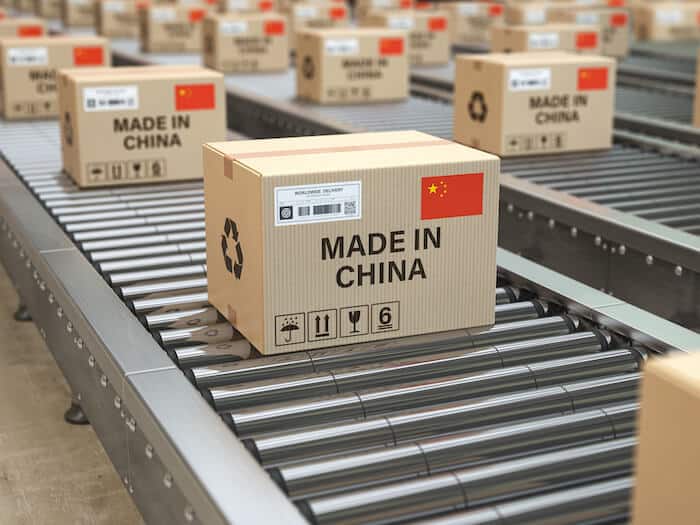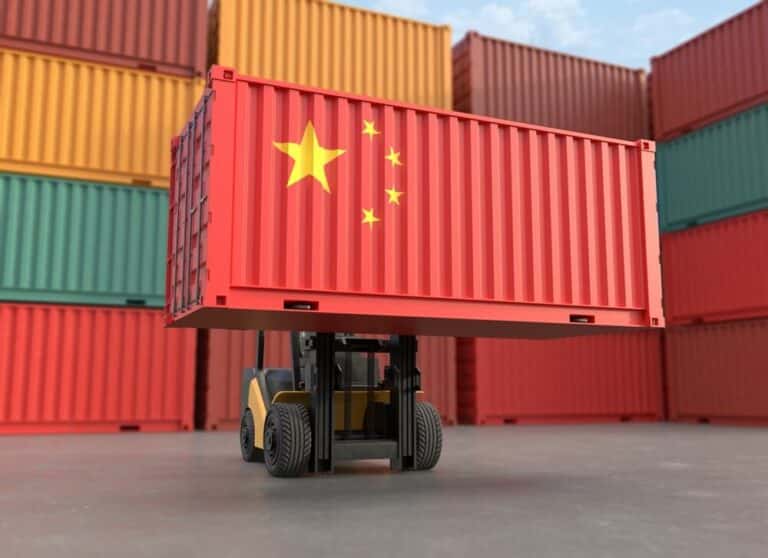In 2025, China’s manufacturing sector is facing mounting challenges, significantly impacting global supply chains and increasing operational costs for businesses. Rising tariffs, higher labor costs, supply chain bottlenecks, and stricter compliance regulations are forcing many small and medium-sized businesses (SMBs) to rethink their sourcing strategies.
This guide delves into the key challenges for SMBs dependent on Chinese manufacturing. Discover alternative manufacturing destinations, actionable strategies for business continuity, and ways to adapt to the ever-changing market landscape.
Key Takeaways
- China’s manufacturing landscape is shifting due to rising tariffs, labor costs, and supply chain disruptions, prompting SMBs to explore alternative production hubs.
- Countries like Vietnam, Mexico, and India offer cost-effective alternatives with strong trade incentives – businesses should carefully consider if they are looking for new manufacturing partners.
- Evaluating government incentives and implementing multi-sourcing strategies are crucial for SMBs to minimize risks and adapt to changing trade dynamics.
The Shifting Role of China in Global Manufacturing
For over four decades, China has been the epicenter of global manufacturing, offering low-cost labor, well-established supply chains, and scalable production capabilities. Its dominance was built on export-driven growth, attracting foreign investment across industries like electronics, textiles, automotive, and consumer goods.
However, as 2025 unfolds, China’s manufacturing model is evolving, driven by cost pressures, government policies, and global economic shifts. This transition is not just a short-term fluctuation—it signals a long-term transformation in global supply chains. Let’s dive deeper into some of the problems plaguing Chinese manufacturing and how they stand to affect the global economy.
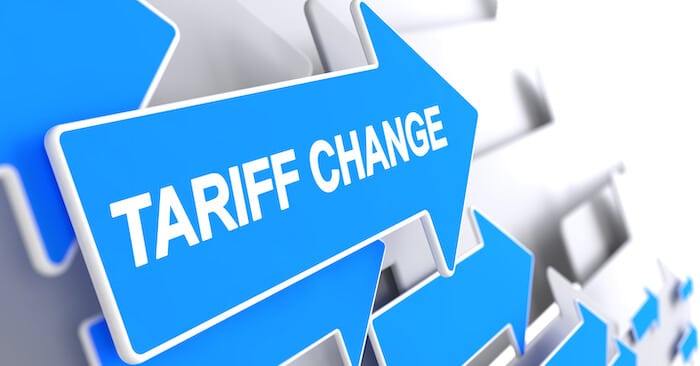
#1: Tariffs & Trade Barriers
Increased trade tensions have resulted in higher tariffs and trade restrictions, affecting global manufacturing decisions. As countries continuously reevaluate their trade policies, SMBs must stay agile and in touch with global trade dynamics.
Impact of U.S.-China Trade Relations
The ongoing trade war between the U.S. and China has had a profound impact on China’s manufacturing sector. As of March 4, 2025, the U.S. has increased tariffs on Chinese imports from 10% to 20%, further escalating trade tensions, according to the Associated Press. In response, China imposed new tariffs of up to 15% on major American agricultural products effective March 10th. These measures have significantly affected market access and stand to reshape supply chains across multiple industries.
New export restrictions from China have also limited access to critical raw materials such as rare earth metals and semiconductors, making some industries more vulnerable. China’s retaliatory tariffs on U.S. goods, including energy products and agricultural machinery, have further strained trade relations, leading to increased operational complexities for SMBs.
Global Trade Dynamics
Geopolitical tensions have led countries to reassess their trade policies, resulting in potential non-tariff barriers and stricter compliance requirements. Governments worldwide are implementing more rigorous import/export controls, certification mandates, and supply chain transparency laws, making it more difficult for SMBs to navigate cross-border commerce. For example, the European Union’s Carbon Border Adjustment Mechanism (CBAM) now requires importers to account for carbon emissions in production, affecting manufacturers reliant on China’s coal-heavy energy grid. Similarly, the U.S. has imposed additional security screenings on Chinese electronics and critical technology imports due to cybersecurity concerns, adding delays and compliance hurdles for businesses.
As nations seek to safeguard economic interests, industries that rely on global supply chains face more administrative and financial burdens. China has responded to Western protectionist policies by restricting access to key raw materials, such as rare earth metals essential for electronics and electric vehicles, causing price fluctuations and supply shortages. Meanwhile, countries like India and Vietnam are leveraging new trade agreements to attract manufacturers looking to avoid tariffs and regulatory complexity in China. These shifting trade policies are redefining global manufacturing networks, forcing SMBs to reassess sourcing strategies, regulatory requirements, and long-term cost implications.
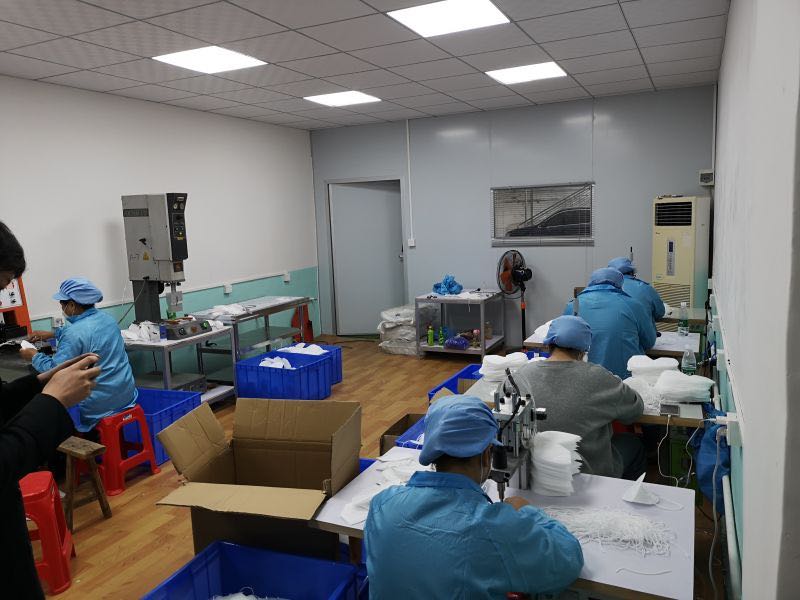
#2: Rising Labor & Production Costs
China’s manufacturing sector is facing significant cost pressures due to rising wages, increasing operational expenses, and stricter government regulations. While China has historically been known for its cost-effective labor, wage growth over the past decade has made it less competitive compared to alternative manufacturing hubs like Vietnam, India, and Mexico. Additionally, new labor policies and heightened enforcement of environmental standards are further driving up costs for manufacturers operating in China.
Wage Inflation in China
Despite economic slowdowns in certain sectors, labor costs in China remain on an upward trajectory. Over the past decade, average wages for manufacturing workers have more than doubled, with significant increases in minimum wages across major industrial hubs. As of January 2025, the minimum wage in Shanghai—the highest in China—stands at yuan 2,690 per month. The average salary for manufacturing workers in the public sector reached yuan 103,932 ($14,568) per year in 2023, significantly higher than private-sector wages, which averaged yuan 71,762 ($10,059).
This wage growth has made China increasingly expensive compared to neighboring manufacturing powerhouses. For example, labor costs in Vietnam remain 50% lower than in China, while Mexico offers the advantage of geographical proximity for North American businesses looking to reduce shipping expenses. As a result, many SMBs are reconsidering their reliance on Chinese factories, particularly for labor-intensive manufacturing.
Increased Operational Expenses
Beyond wages, manufacturers in China are contending with rising operational costs due to energy shortages, stricter government regulations, and increased compliance requirements. Recent policies enforcing environmental sustainability have raised costs related to emissions controls, waste management, and factory audits. Additionally, electricity rationing in industrial zones has caused production delays, further straining manufacturers’ ability to maintain efficient output.
For SMBs, these rising expenses create significant pricing challenges. Many businesses are forced to either absorb higher costs, pass them on to consumers, or seek alternative production hubs with more stable cost structures. This trend is accelerating the shift toward Southeast Asia and Latin America, where labor remains more affordable and regulatory costs are less burdensome.
#3: Supply Chain Disruptions & Logistics Issues
China’s role as the world’s largest exporter has made its supply chain dynamics critical to global commerce. However, in 2025, ongoing disruptions—ranging from shipping delays and rising freight costs to geopolitical conflicts and regulatory shifts—have created significant challenges for businesses that rely on Chinese manufacturing. Small and medium-sized businesses (SMBs), which often lack the resources and supply chain flexibility of larger corporations, are feeling the impact the most.
The COVID-19 pandemic exposed vulnerabilities in global supply chains, and many of those problems persist today. While some bottlenecks have eased, new disruptions—such as port congestion, increased fuel costs, and regulatory changes—continue to slow down international trade. Shipping times from China to major Western markets have lengthened, while transportation expenses have surged.

#4: Compliance & Regulatory Uncertainty
China’s regulatory landscape has become increasingly stringent, placing a significant burden on manufacturers operating within the country. Environmental laws, labor regulations, and global trade compliance standards have all tightened, leading to increased operational costs and supply chain complications for small and medium-sized businesses (SMBs). Navigating these evolving regulations is critical for businesses looking to maintain uninterrupted production while avoiding legal risks.
Stricter Manufacturing & Trade Regulations in China
China has implemented more aggressive environmental regulations, requiring manufacturers to adopt cleaner production methods, reduce emissions, and invest in sustainable practices. Factories that fail to meet these environmental standards risk shutdowns, penalties, or restrictions on exports. This has led to increased compliance costs, particularly in labor-intensive and high-emission industries such as textiles, electronics, and chemical manufacturing.
Labor laws have also been reinforced, placing stricter oversight on working conditions, wages, and employee rights. Chinese authorities are increasing factory inspections to enforce compliance with worker protection policies, leading to potential fines or production slowdowns for businesses that do not meet regulatory standards. For SMBs relying on Chinese manufacturers, this means added due diligence is required to ensure suppliers adhere to evolving labor and environmental policies.
Global Trade Compliance & Its Impact on SMBs
Beyond domestic regulations, manufacturers exporting from China must also comply with stricter global trade standards. The European Union’s Registration, Evaluation, Authorization, and Restriction of Chemicals (REACH) law imposes stringent chemical safety requirements on products entering EU markets, affecting industries such as consumer electronics, textiles, and toys. Similarly, the U.S. Consumer Product Safety Commission (CPSC) enforces strict product safety regulations, particularly for children’s toys, electronics, and household goods.
Non-compliance with these regulations can lead to product recalls, hefty fines, and restricted market access, making it essential for SMBs to closely monitor evolving trade policies. Many businesses are now conducting more frequent third-party product testing and implementing stricter quality control protocols to avoid compliance issues when exporting to Western markets.
#5: Intellectual Property (IP) & Quality Control Risks
Despite China’s manufacturing dominance, intellectual property (IP) protection remains a persistent issue for foreign companies. Weak enforcement of IP laws, widespread counterfeiting, and unauthorized duplication of proprietary products pose significant risks for SMBs. Additionally, quality control inconsistencies in some manufacturing facilities have led to issues such as defective products and material substitutions, further complicating production reliability.
The Risks of IP Theft & Counterfeiting in China
IP theft in China remains a major concern, particularly for businesses producing proprietary or innovative products. Some Chinese factories have been known to replicate foreign designs and sell unauthorized copies in domestic and international markets. This is especially problematic for companies in the electronics, fashion, and consumer goods industries, where counterfeiting is rampant.
Even with patents and trademarks registered in China, enforcement remains inconsistent, and legal action can be costly and time-consuming for SMBs. Many businesses struggle to take meaningful legal action against IP infringement, leading some to explore alternative manufacturing hubs with stronger legal protections, such as Mexico, India, or Western Europe.

Quality Control & Material Substitutions
Quality control and material substitutions are challenges that manufacturers can face in any country, and China is no exception. In some cases, factories may replace original materials with cheaper alternatives without informing clients, leading to defective products that fail to meet regulatory or safety standards. This is particularly concerning for industries such as medical devices, consumer electronics, and children’s toys, where strict safety regulations apply.
To mitigate these risks, many SMBs are increasing their investment in third-party audits, on-site inspections, and quality assurance programs. Working with trusted suppliers, implementing stricter production agreements, and securing regular factory evaluations can help ensure that final products meet expected standards.
Exploring Alternative Manufacturing Partners to China
While China’s manufacturing sector has long been the dominant hub for global manufacturing, shifting economic conditions, tariffs, and supply chain disruptions have led many SMBs to explore alternative production locations. Countries like India, Vietnam, Mexico, and Western Europe offer unique advantages and challenges that SMBs should evaluate before transitioning.
India
India presents a compelling alternative to China with its large, skilled workforce, competitive labor costs, and government initiatives like “Make in India” and Production Linked Incentive (PLI) schemes. The country is particularly strong in electronics, textiles, pharmaceuticals, and automotive manufacturing. However, businesses must navigate infrastructure gaps, bureaucratic red tape, and logistical inefficiencies, which can pose challenges for companies requiring seamless supply chain integration.
Vietnam
Vietnam has positioned itself as a growing manufacturing hub, especially for textiles, apparel, and electronics assembly. With lower labor costs than China and strong trade agreements like the Comprehensive and Progressive Agreement for Trans-Pacific Partnership (CPTPP) and Regional Comprehensive Economic Partnership (RCEP), it offers favorable conditions for exporters. However, Vietnam’s reliance on imported raw materials and limited high-tech manufacturing capacity can be constraints for businesses needing more advanced production capabilities.
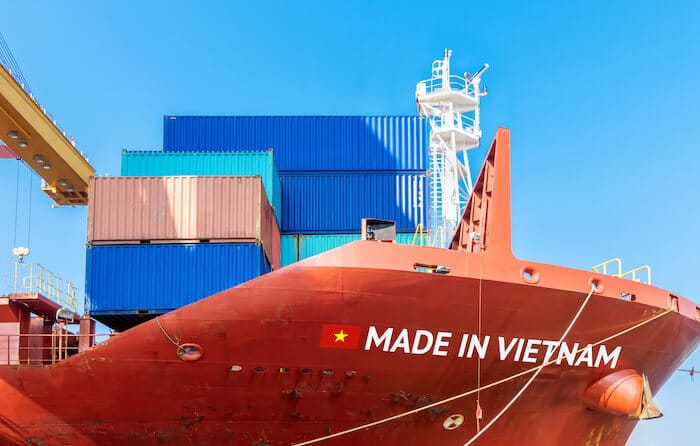
Mexico
Mexico provides a strong nearshoring option for North American businesses due to its proximity, reduced shipping costs, and tariff-free trade under the United States-Mexico-Canada Agreement (USMCA). The country is a key player in automotive, aerospace, medical devices, and industrial manufacturing. While it offers logistical advantages, Mexico’s higher labor costs compared to Southeast Asia and security concerns in certain regions require careful risk assessment.
Western Europe
Western Europe is ideal for high-quality, precision-based manufacturing, particularly in industries like medical devices, aerospace, and advanced electronics. Strong intellectual property protections and automation-driven production ensure consistent quality and compliance with strict regulatory standards. However, significantly higher labor costs and limited capacity for large-scale, low-cost mass production make it less suitable for budget-conscious SMBs seeking high-volume output.
Other Viable Alternatives to Consider
Several other countries are emerging as competitive manufacturing alternatives. Thailand offers government-backed incentives for electronics and automotive production, while Indonesia is expanding its industrial base despite infrastructure limitations. Malaysia has a well-established semiconductor and electronics sector with a stable business environment. Meanwhile, Turkey, positioned between Europe and Asia, provides a skilled workforce and easy access to EU markets, making it a strategic location for manufacturers looking to serve multiple regions.
Actionable Strategies for SMBs
Given these challenges, SMBs must prioritize resilience and efficiency in their manufacturing strategies. From negotiating better terms with existing suppliers to adopting AI and automation, several actionable strategies can help businesses navigate the complexities of the current manufacturing landscape.
Negotiate with Existing Suppliers
Bulk purchasing agreements, extended payment terms, or cost-sharing arrangements can reduce the impact of tariffs. Strong supplier relationships can lead to better terms and collaborative cost-saving initiatives. Strategic negotiation tactics, such as emphasizing long-term relationships and mutual benefits, can foster better terms.
Develop a Multi-Sourcing Strategy
Engaging multiple suppliers across different regions mitigates risks associated with over-reliance on a single source. Establishing regional manufacturing hubs closer to key markets reduces shipping times and costs. Utilizing suppliers from diverse geographical regions enhances supply chain resilience against disruptions.
Assess Government Incentives & Trade Agreements
Investigate and apply for tax benefits, grants, and subsidies from alternative manufacturing countries to offset relocation expenses. Utilize favorable trade agreements to minimize tariffs and enhance market access. Staying informed about policy changes can help businesses capitalize on new incentives for manufacturing relocations.
Adopt AI & Automation for Smarter Supply Chain Management
Implementing automation and AI-driven solutions increases operational efficiency and reduces dependence on manual labor. Advanced supply chain management software offers real-time tracking and predictive analytics, optimizing inventory management by forecasting demand patterns and aligning resources accordingly.
Strengthen Intellectual Property Protections
Registering intellectual property in China and key alternative manufacturing locations prevents unauthorized use. Regular audits and collaboration with third-party inspectors can maintain product quality and compliance. Establishing robust IP protection strategies can significantly enhance a company’s competitive edge in international markets.
Navigating China’s Manufacturing Challenges & Moving Forward
As China’s role in global manufacturing shifts due to rising costs, trade tensions, and supply chain disruptions, SMBs must adapt to remain competitive. Tariffs, labor expenses, compliance regulations, and logistical uncertainties are making it increasingly difficult for businesses to rely solely on Chinese manufacturing. At the same time, alternative markets like Vietnam, Mexico, India, and Western Europe are emerging as viable production hubs, offering unique advantages based on industry needs.
The key to success lies in strategic decision-making. SMBs should assess government incentives, trade agreements, and supplier diversification to minimize risks and optimize costs. Leveraging AI, automation, and digital supply chain management tools can improve efficiency, while negotiating better terms with existing suppliers can help mitigate immediate financial pressures.
While China remains a significant manufacturing player, businesses that explore diversified sourcing strategies and embrace new production models will be better positioned to navigate ongoing disruptions. By taking a proactive approach, SMBs can build more resilient, cost-effective, and scalable manufacturing operations for the years ahead.
Frequently Asked Questions
What are the biggest risks of manufacturing in China in 2025?
The major risks of manufacturing in China in 2025 include increased tariffs, rising labor costs, supply chain delays, and strict compliance requirements.
How can SMBs reduce tariff costs when sourcing from China?
SMBs can reduce tariff costs by shifting production to alternative locations, negotiating with suppliers, and leveraging trade agreements like USMCA/CPTPP. Free trade agreements and partnerships with local suppliers can help mitigate tariff impacts.
How can SMBs negotiate better terms with Chinese suppliers?
SMBs can negotiate better terms with Chinese suppliers by sharing costs on tariffs, securing bulk order discounts, and working out other compromises with Chinese suppliers.
How does AI help SMBs improve supply chain efficiency?
AI boosts supply chain efficiency by improving inventory forecasting, supplier tracking, and quality control. It can also optimize logistics and transportation routes, resulting in faster delivery times and reduced operational costs.
What are the best alternatives to China for SMBs?
The best alternatives to China for SMBs include Vietnam, Mexico, and India, which offer strong trade incentives and competitive labor costs. Thailand and Indonesia are also emerging as viable options for certain manufacturing sectors. All in all, the “best” alternative depends on a company’s manufacturing needs.
